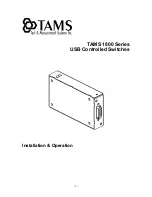
Authentication List Summary
Use the Authentication List Summary page to view and configure the authentication lists used for
management access and port-based (IEEE 802.1X) access to the system. An authentication list specifies
which authentication method(s) to use to validate the credentials of a user who attempts to access the
device. Several authentication lists are preconfigured on the system. These are default lists, and they
cannot be deleted. Additionally, the List Name and Access Type settings for the default lists cannot be
changed.
To access this page, click
System
>
AAA
>
Authentication List
in the navigation menu.
shows the fields for the Authentication List Summary page.
Table 40: Authentication List Summary Fields
Field
Description
List Name
The name of the authentication list. This field can be configured only when
adding a new authentication list.
Access Type
The way the user accesses the system. This field can be configured only when
adding a new authentication list, and only the Login and Enable access types can
be selected. The access types are as follows:
•
Login – User EXEC-level management access to the command-line interface
(CLI) by using a console connection or a
session. Access at this
level has a limited number of CLI commands available to view or configure
the system.
•
Enable – Privileged EXEC-level management access to the CLI by using a
console connection or a telnet or SSH session. In Privileged EXEC mode,
read-write users have access to all CLI commands.
•
HTTP – Management-level access to the web-based user interface by using
HTTP.
•
HTTPS – Management-level access to the web-based user interface by using
secure HTTP.
•
Dot1x – Port-based access to the network through a switch port that is
controlled by IEEE 802.1X.
Method Options
The method(s) used to authenticate a user who attempts to access the
management interface or network. The possible methods are as follows:
•
Enable – Uses the locally configured Enable password to verify the user's
credentials.
•
Line – Uses the locally configured Line password to verify the user's
credentials.
•
Local – Uses the ID and password in the Local User database to verify the
user's credentials.
•
RADIUS – Sends the user's ID and password to the configured
server
to verify the user's credentials.
•
– Sends the user's ID and password to the configured
server to verify the user's credentials.
•
None – No authentication is used.
•
IAS – Uses the local Internal Authentication Server (IAS) database for 802.1X
port-based authentication.
Configuring System Information
ExtremeSwitching 200 Series: Administration Guide
65
















































